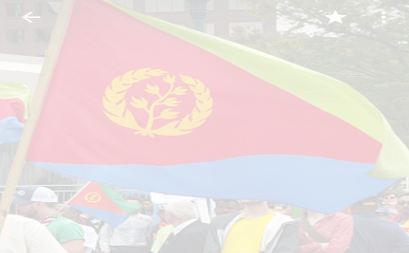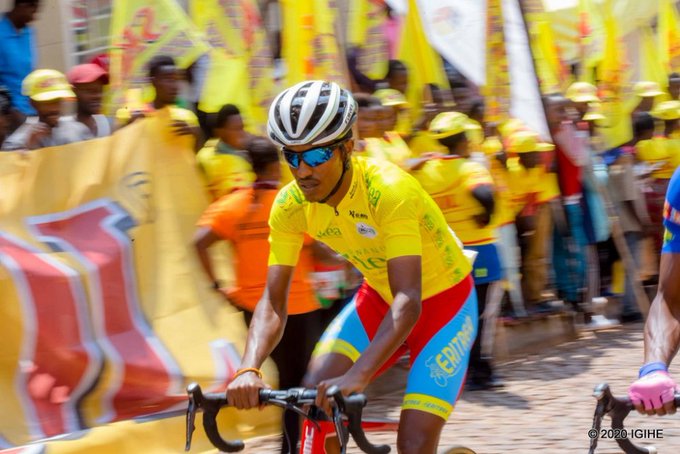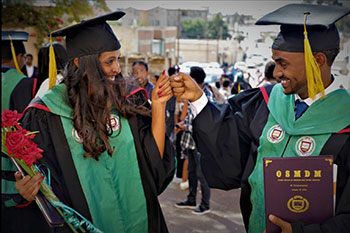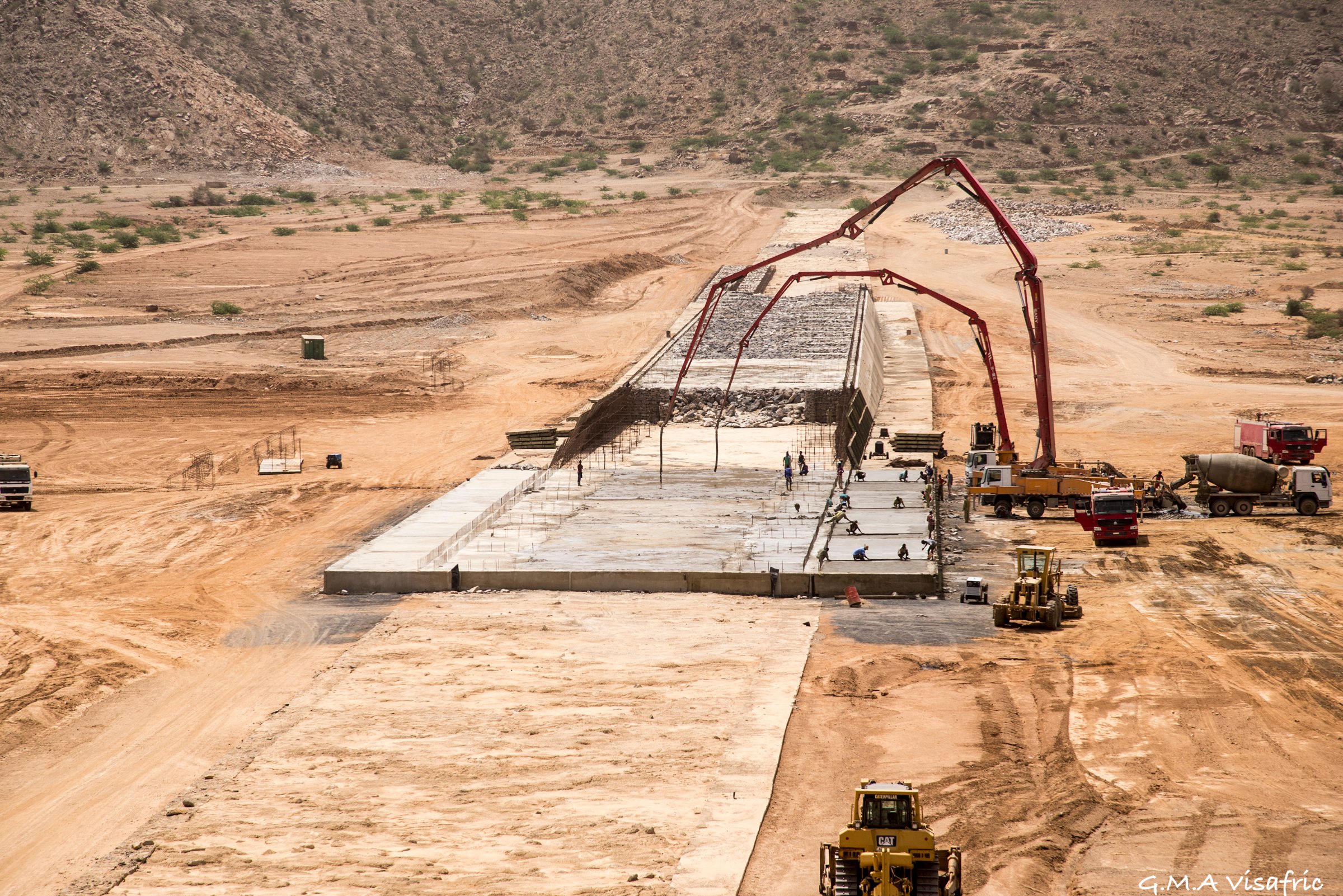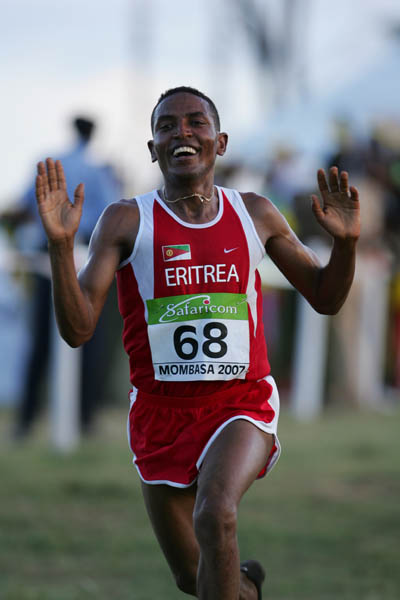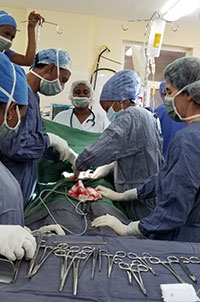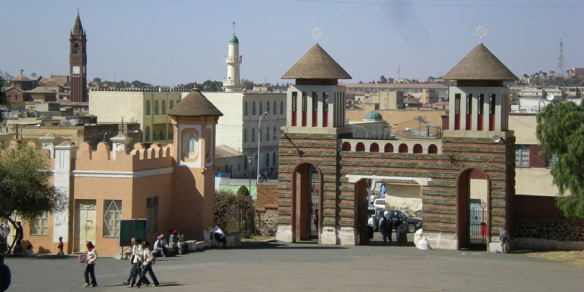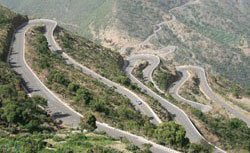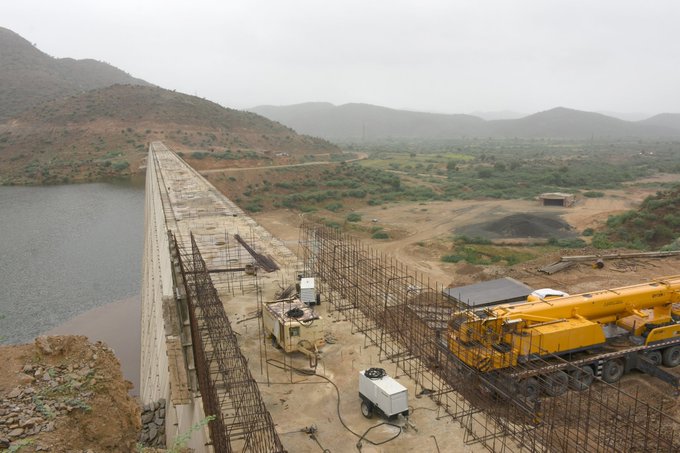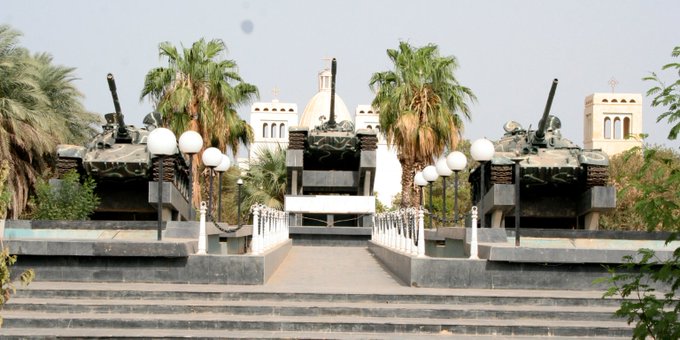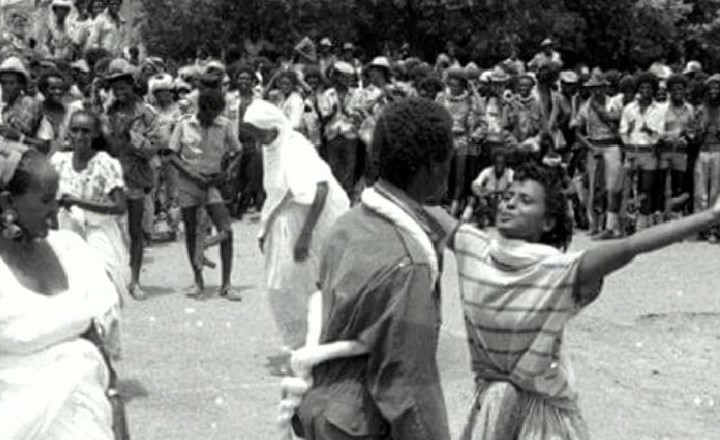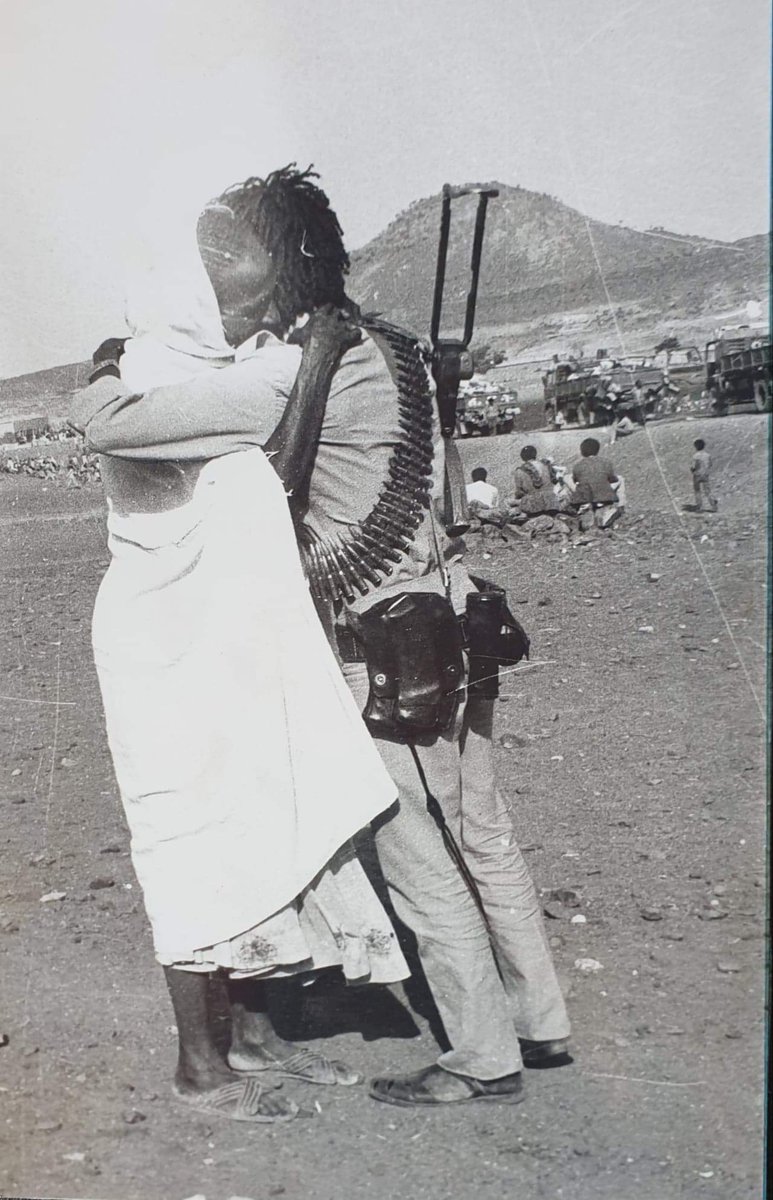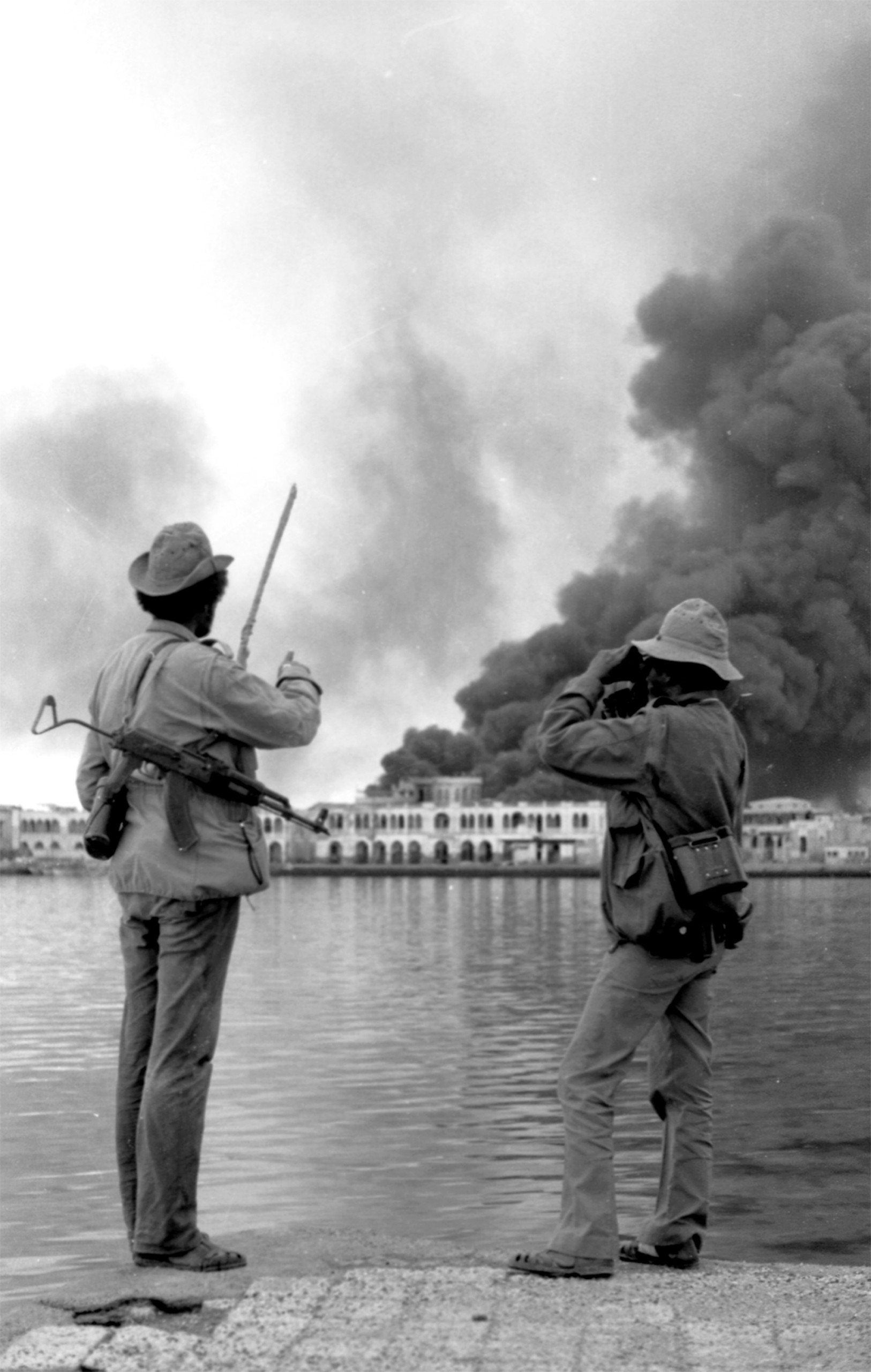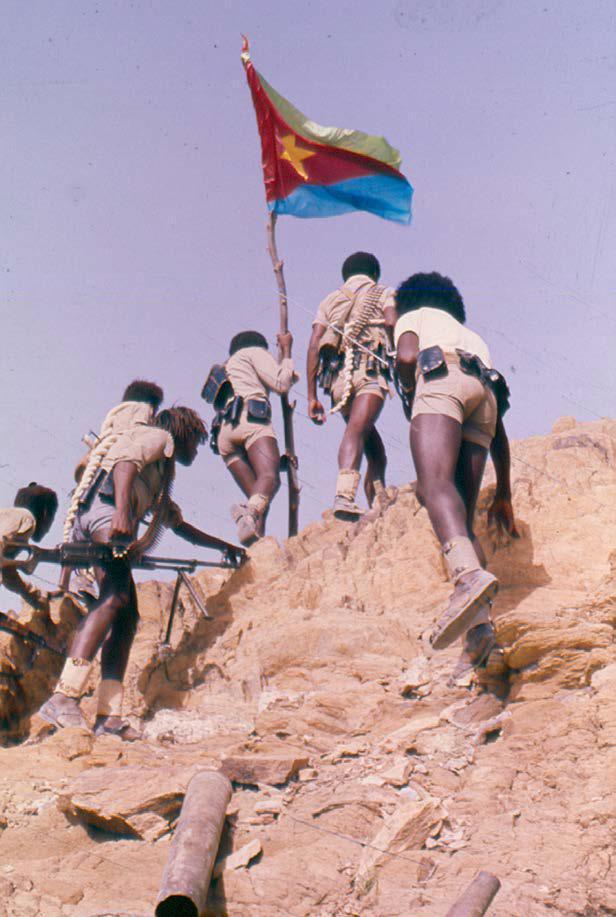Our History
Did you know that Eritrea is one of the newest countries in the world, though one of the earliest African countries to be introduced to modern technology? Or that it was a center for commercial activities in the Horn of Africa in the early 1900s? Or that its people struggled for more than 30 years to secure their independence?
Modern-day Eritrea is defined by that struggle for independence. It was an all-encompassing armed struggle to liberate Eritrea and Eritreans from all of the ills of oppression, inequality, and poverty.
Eritrea’s rich and glorious history stretches back 6000 B.C. Today, across the land, many monuments testify to the wealth of Eritrea’s fascinating past.
Independent Eritrea
1991 to Present
In 1991, the Eritrean People’s Liberation Front (EPLF) captured the Eritrean capital, the ultimate prize—Asmara—bringing to an end the 30-year bitter struggle for liberation. On May 24, 1991, independence was achieved, in effect if not yet by law. At once, the newly formed Provisional Government of Eritrea (PGE) set out to reconstruct the country’s devastated infrastructure while building a rudimentary state apparatus to manage the transition to internationally recognized sovereignty. Eritrea formally gained its independence and sovereignty following an internationally monitored referendum in 1993.
Self-determination is an intrinsic trait of Eritreans. Hence, Eritrea is committed to self-development with dignity, relying first and foremost on its own people to set the pace, direction, and character of the country’s passage from colonial subjugation to full economic sovereignty.
Extraordinary levels of popular participation in the country’s reconstruction and development are the hallmark of Eritrea’s post-independence growth.
As it was during the struggle for independence and as it still is today, Eritrea’s main goal has always been to achieve social justice for its people. As such, it has registered significant accomplishments. To mention only a few, these include:
- Women’s issues: National legislation, policies, strategies, and programs have been implemented to safeguard women’s equal access to all available resources and to ensure their participation in Eritrea’s pursuit of peace, prosperity, and development.
- Food security and access to clean potable water: In 1991, Eritrea had fewer than 100 dams and water reservoirs. Today, the country boasts of more than 900. It produces 75% of its food requirements and has established a program for food . Access to safe drinking water has increased from 7% at the time of independence to 95%.
- Health care: More than 80% of the population in rural areas has access to health care within three miles. More than 95% of infants are Immunized. Communicable and non-communicable diseases and maternal and infant mortality rates have significantly decreased. Health education and communication are provided through massive grassroot efforts.
- Education: Eritrea considers education to be key to national development and is committed to building human capital. National legislation, policies, strategies, and programs are in place to reflect the need to eradicate illiteracy. Education is free to all citizens, including secondary and tertiary levels. Elementary education is compulsory for all citizens. Seven colleges have been constructed in different parts of the nation to provide higher education and integration with regional communities.
The Liberation Struggle
1961-1991
The most dramatic and self-sacrificing epoch in all of Eritrea’s long and glorious history was the bloody War of Liberation, which concluded with its emancipation into statehood in 1991. For 30 long years, the nation’s heroes steadfastly carried the struggle for freedom forward against all odds. Today when you tour the battlefields where the fallen were martyred, the agony of those years and the ecstasy of the final triumph still hang in the air along with the echoes of heroism that went beyond the call of duty.
The bloodshed began only after continuous, multiple pleas and protests fell on deaf ears. All Eritrean voices were muzzled. So, in search of the collective dream of self-determination and self-development, an armed struggle for liberation was declared as the sole means to achieve independence from Ethiopian rule. On September 1, 1961, a group of independence fighters fired the first shots of the revolution.
The long and bitter, 30-year struggle was against an opponent with a larger population, bigger and better armaments, more resources, and large-scale foreign intervention and investment. On the journey to independence, independence fighters had to also overcome challenges that nature itself presented: rough terrain and weather that made fighting more difficult and famines that led to starvation. Yet against all odds, Eritreans were victorious in realizing their vision of independence.
UN Forced Federation and Ethiopian Annexation
1952-1962
During the fourth session of the United Nations General Assembly in September 1949, Western powers resolved that the former Italian colonies of Libya and Somalia would be given their independence after a ten-year Italian trusteeship. On the question of Eritrea, because of opposition to the desire of the Western powers to partition Eritrea between Sudan and Ethiopia, a UN commission was created to research the wishes of the people of Eritrea.
Although it was determined that the majority of the Eritrean people wanted complete independence, the UN Commission of Inquiry presented opposing proposals—independence or unity with Ethiopia—and the UN General Assembly forced Eritrea to accept federation with Ethiopia. Under the guise of reconciling Ethiopian claims of sovereignty and Eritrean aspirations for independence, the Federation provided the path for the United States to secure a military base in Asmara. In December 1950, the United Nations resolved to forcibly join Eritrea to Ethiopia within two years despite the wishes of the Eritrean people for an independent nation.
After years of continuous violations of the Federation terms, in November 1962, Ethiopia’s emperor dissolved the Federation and annexed Eritrea, triggering the 30-year armed struggle in Eritrea.
British Colonization
1941-1951
In early 1941, the British defeated the Italians in Eritrea at the Battle of Keren, defining yet another transitional time for Eritrea. On April 1, 1941, British forces seized Asmara and hence placed the colony under British military administration during World War II until the Allied forces would determine its fate. The occupation was intended to be temporary, and the ‘caretaker’ policy was to keep Eritrea weak and disunited in order to maintain control. British forces moved Eritrean industries from Asmara and Massawa to Kenya as war compensation. They destroyed other factories and machinery. They dismantled and removed parts of the Eritrean railway. And immediately following the end of World War II, the British proposed that Eritrea be divided along religious lines and parceled off between Ethiopia and Sudan, breaking their initial promise of self-governance to the people of Eritrea.
Italian Colonization
1889 – 1941
Eritrea was officially declared an Italian colony on January 1, 1890, by the royal decree of Umberto I. Italy’s presence in Eritrea started when an Italian monk purchased land in Assab on behalf of an Italian shipping company in 1869. That land and more that was purchased by the shipping company was then sold to the Italian government in 1882.
With Italy’s conquest of Massawa in February 1885, it quickly consolidated its footing on the Eritrean coastline and areas farther inland. Italy continued with its plan to create a settler colony and faced various forms of protest and resistance. Italy confronted these challenges militarily, politically, and diplomatically. Eventually, Italy steered the process to the delineation of borders between Eritrea and Ethiopia in 1889, resulting in the colonization of Eritrea.
Pre-colonial Eritrea
Pre – 1889
The history of Eritrea, dating as far back as 6000 BC, is rich and filled with complexity. The origin of the name Eritrea is the word erythrean, Greek for “red” (in reference to the Red Sea).
In about 338 AD, Christianity was introduced in Eritrea. And the year 615 brought Islam to Eritrea. The strategic location it inhabits has not only been a source of enrichment but also the root of many of its tribulations. Eritrea’s geographical location made it a vital trading route, even during the first millennium BC. Qohaito, found on one of the plateaus of Eritrea, was just one of the thriving ancient trading cities. For centuries, many Eritrean and foreign rulers and empires struggled for control of this region in order to exert power and influence over the trading route, ultimately leading to the establishment of Italian Eritrea in 1890.

